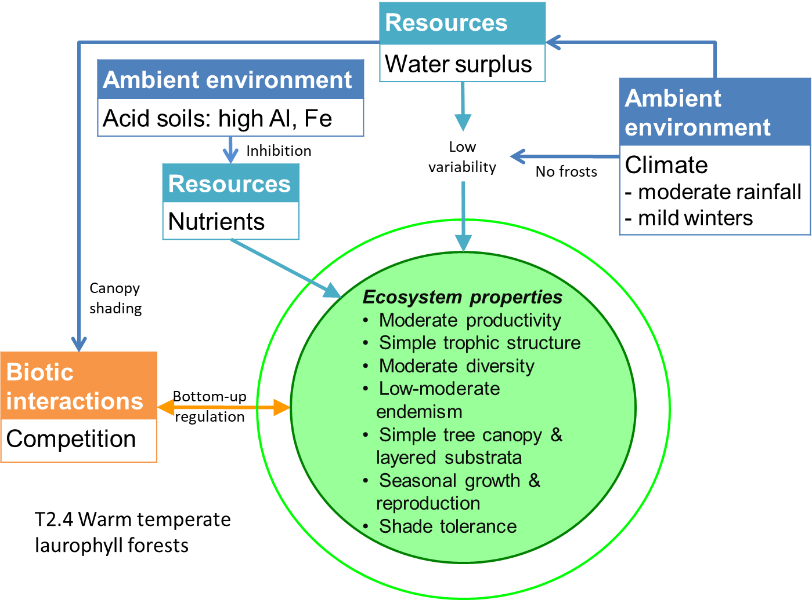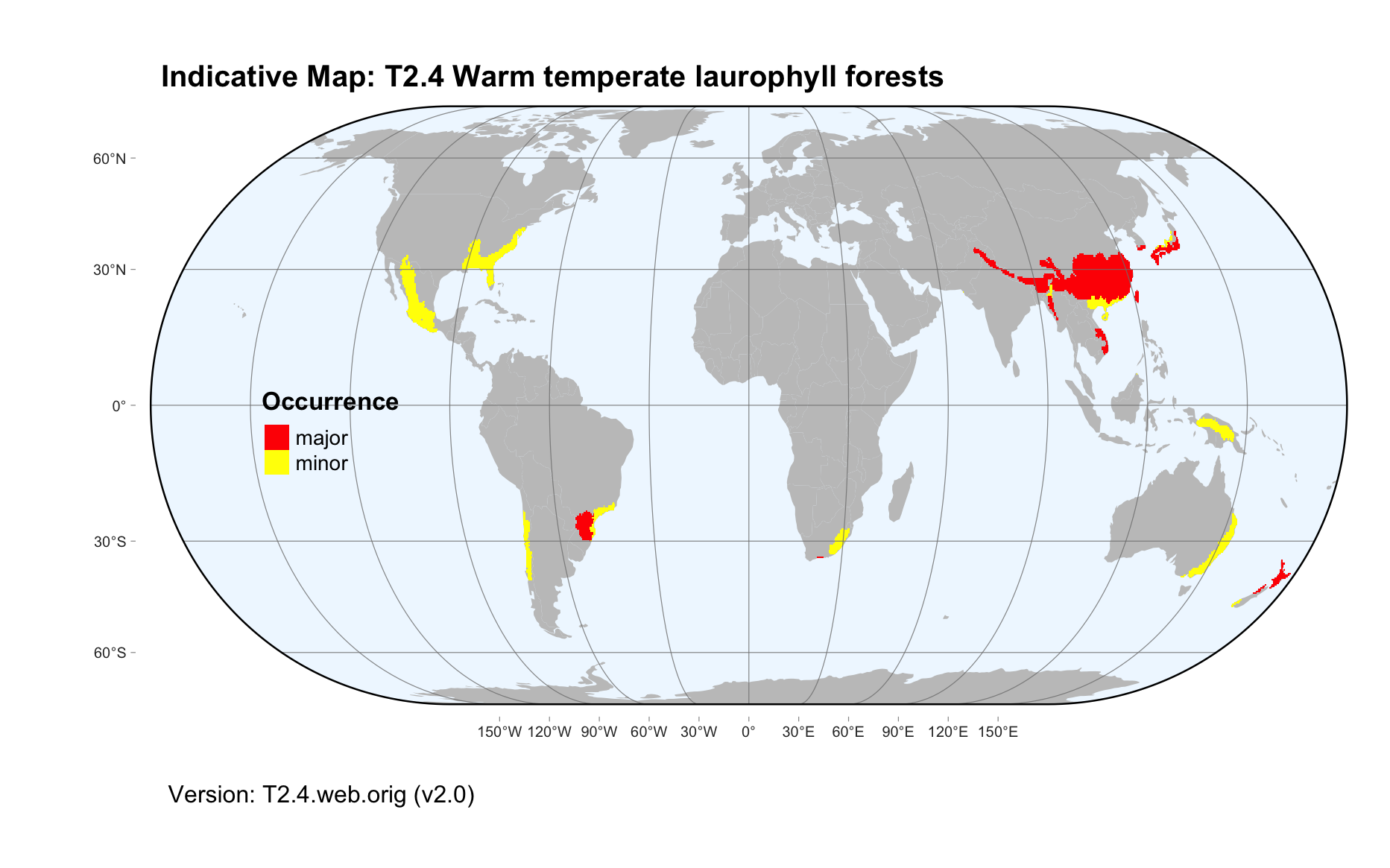Global ecosystem typology
Alternative site for the Global ecosystem typology with additional information for ecosystem profiles and indicative maps.
This site is maintained by jrfep
T2.4 Warm temperate laurophyll forests
Biome: T2. Temperate-boreal forests and woodlands biome
Contributors:
(texts)
With a patchy warm-temperate distribution, laurophyll forests are extensive in some regions, but more typically occupy topographic refugia in a matrix of drier, more fire-prone ecosystems. They have glossy- or leathery-leaved dense evergreen canopies, with moderate tree diversity. A mild climate, and more acid soils, distinguish them from oceanic cool temperate forests (T2.3). Primary productivity is high, but can be limited by mild summer drought. Decomposers such as invertebrates, fungi, and microbes on the forest floor are critical to nutrient cycling. Insects are the major consumers of primary production and a major food source for birds and bats, which can be important seed-dispersers and pollinators. Vertebrate herbivores are relatively uncommon.
Key Features
Simple, closed-canopy mostly evergreen forests in warm environments with modest summer rainfall deficits; moderate diversity and endemism.
Overview of distribution
Patchy warm temperate-subtropical distribution at 26–43° latitude, north or south of the Equator.
Profile versions
- v1.0 (2020-01-20): DA Keith; NA Brummitt; D Faber-Langendoen
- v2.0 (2020-08-24): DA Keith; NA Brummitt; D Faber-Langendoen; RT Corlett; MS McGlone
- v2.01 ():
- v2.1 (2022-04-06): DA Keith; NA Brummitt; D Faber-Langendoen; RT Corlett; MS McGlone Full profile available at official site
Main references
Selected references for this functional group:
Mucina L (2018) Vegetation survey and classification of subtropical forests of southern Africa Springer International Publishing DOI:10.1007/978-3-319-67831-3
Grubb PJ, Bellingham PJ, Kohyama TS, Piper FS Valido A (2013) Disturbance regimes, gap-demanding trees and seed mass related to tree height in warm temperate rain forests worldwide Biological Reviews 88: 701–744 DOI:10.1111/brv.12029
Corlett RT Hughes AC (2015) Subtropical Forests Handbook of Forest Ecology pp. 46-55. Routledge
Diagrammatic assembly model

Maps
Maps are indicative of global distribution patterns are not intended to represent fine-scale patterns. The maps show areas of the world containing major (coloured red) or minor occurrences (coloured yellow) of each ecosystem functional group. See general notes on maps.
There are 2 alternative versions of the indicative map for this functional group, please compare description and sources below.
T2.4.IM.orig_v2.0
Datasets
Map references
T2.4.web.orig_v2.0

Datasets
- Resolve-Ecoregions-2017
Map references
Dinerstein E, Olson D, Joshi A, Vynne C, Burgess ND, Wikramanayake E, Hahn N, Palminteri S, Hedao P, Noss R, Hansen M, Locke H, Ellis EE, Jones B, Barber CV, Hayes R, Kormos C, Martin V, Crist E, Sechrest W, Price L, Baillie JEM, Weeden D, Suckling K, Davis C, Sizer N, Moore R, Thau D, Birch T, Potapov P, Turubanova S, Tyukavina A, de Souza N, Pintea L, Brito JC, Llewellyn Barnekow Lillesø JP, van Breugel P, Graudal L, Voge M, Al-Shammari KF, Saleem M (2017) An Ecoregion-Based Approach to Protecting Half the Terrestrial Realm, BioScience 67: 534–545. DOI:10.1093/biosci/bix014. Data-set available on-line
Check: the Glossary / Profile structure / the public document